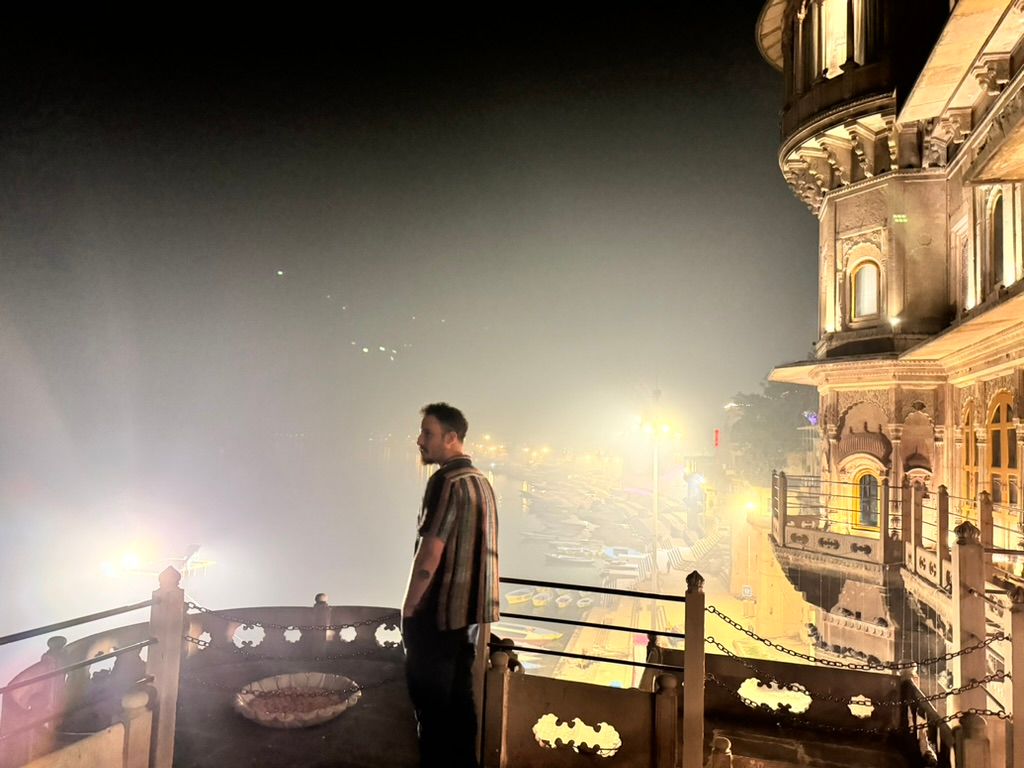
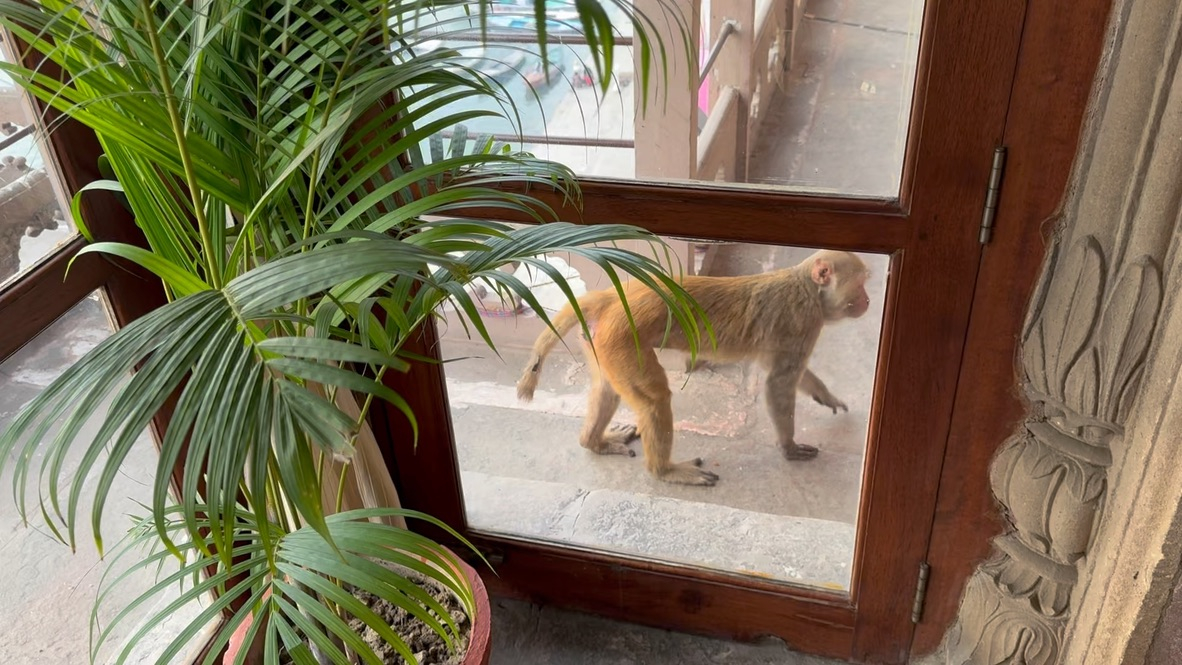
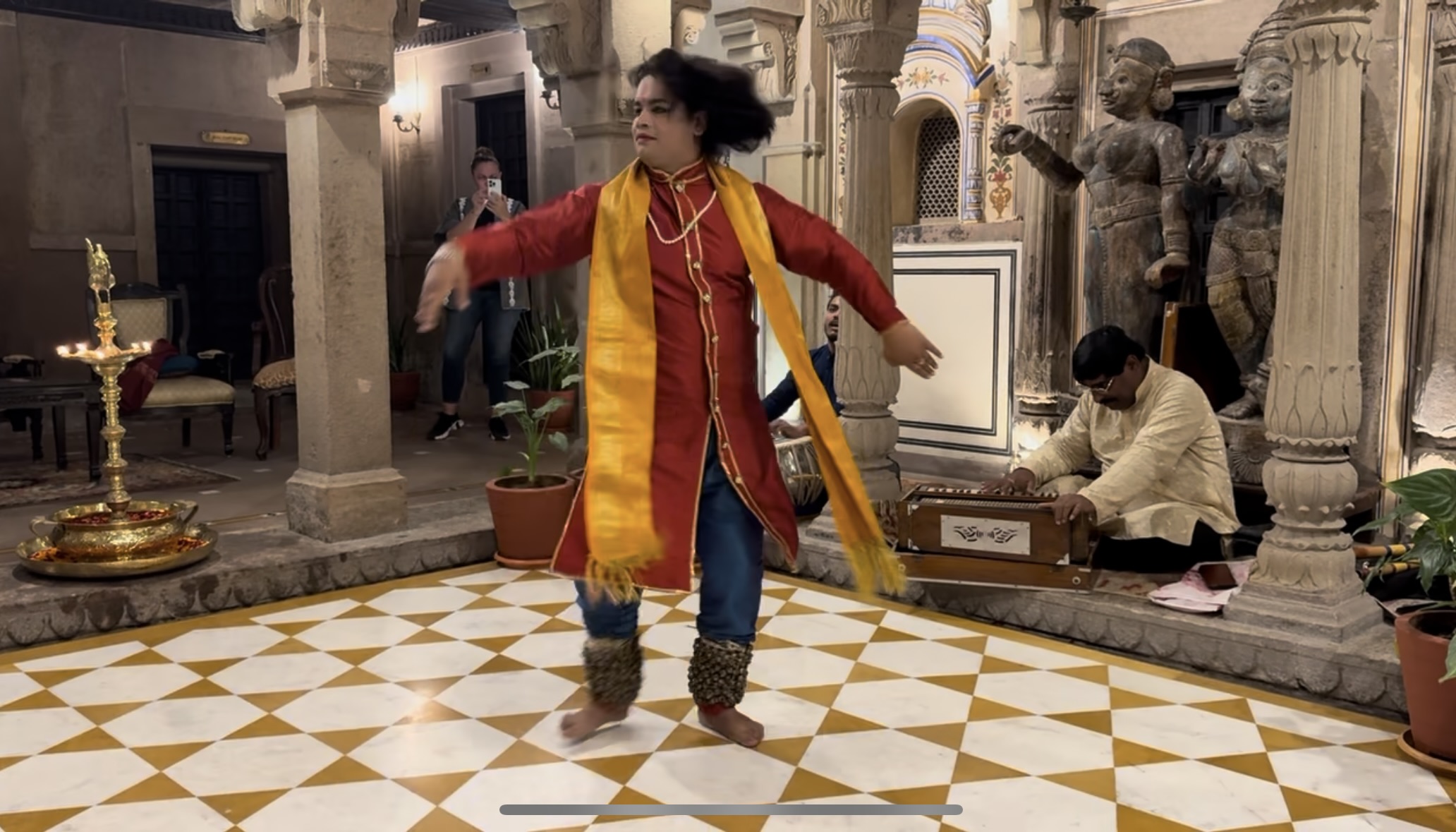
Varanasi, India
Blurring the line between life and death
We spent 2 nights in Varanasi, a city of death, and one of the oldest, most spiritual places on the planet. We stayed at the beautiful BrijRama Palace, built in the early 1800s and located at the foot of the Ganges River. Life in Varanasi is centered around the sacred Ganges – prayer sessions, boat rides, and even an outdoor crematorium that has been in operation for 3,000 years – all take place at its shores.
Need help designing your own trip? Contact us.
The Ganges and its 84 ghats
Varanasi seems to operate on its own plane and as we learned from our tour guide, Hindus believe that it sits on the middle tip of Shiva’s trident. As the religious capital of India, one of the oldest cities on the planet, and a place where death is anything but hidden, it has an ultra-spiritual, otherworldly energy that is palpable in its hazy air.
The Ganges River, which is sacred for Hindus as it is believed to be the personification of their goddess of forgiveness, is the life source for Varanasi’s spiritual activity. It’s accessed via 84 ghats, or series of steps, leading from the city to the holy water.
Darbhanga Ghat (BrijRama Palace)
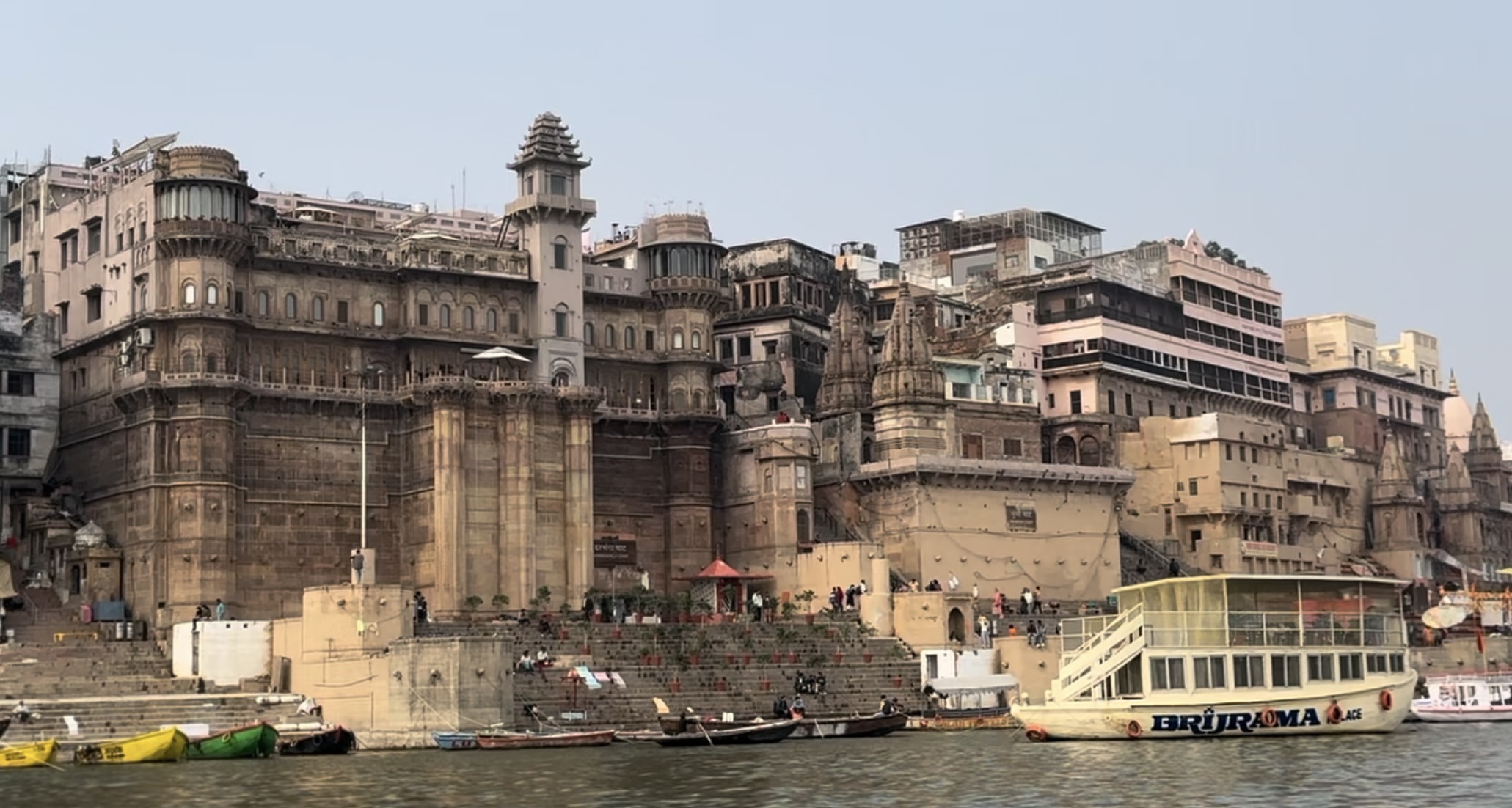
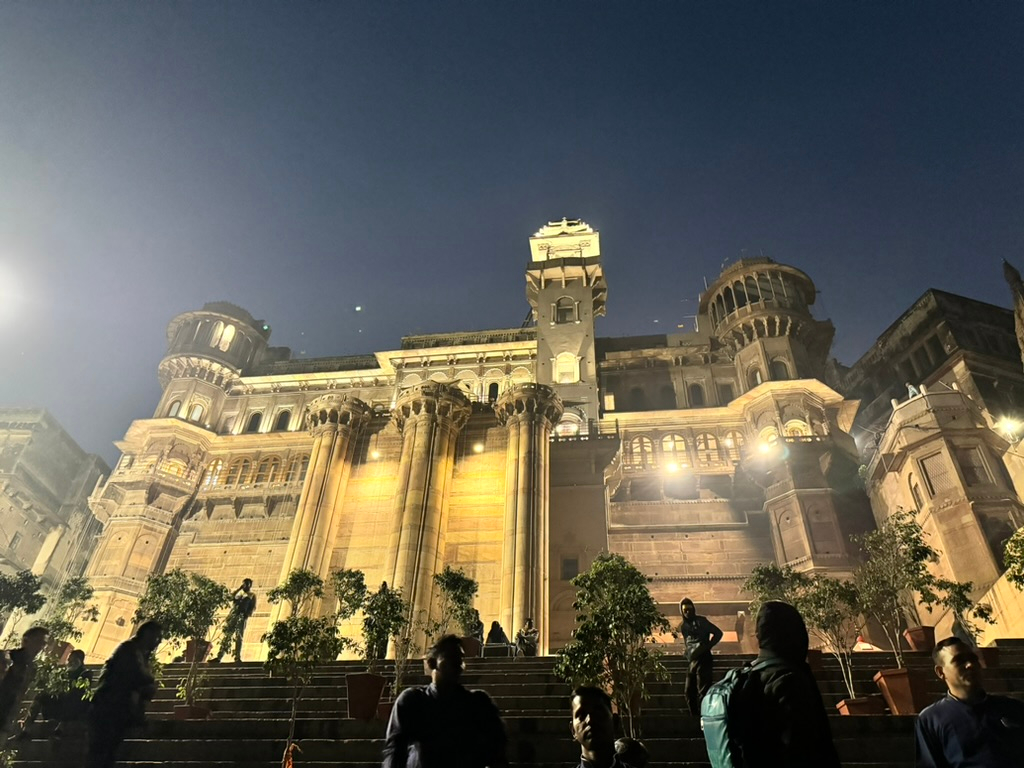
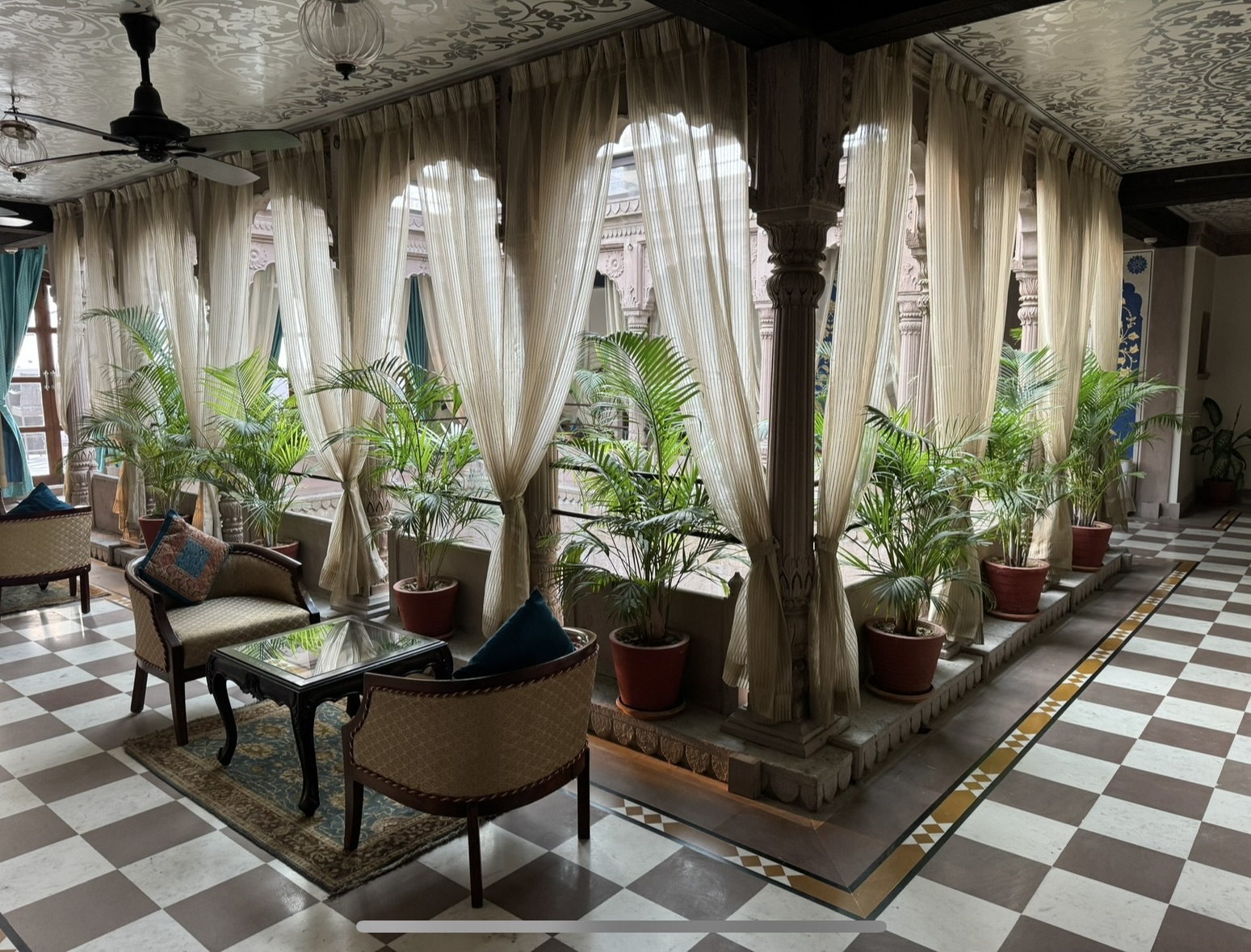
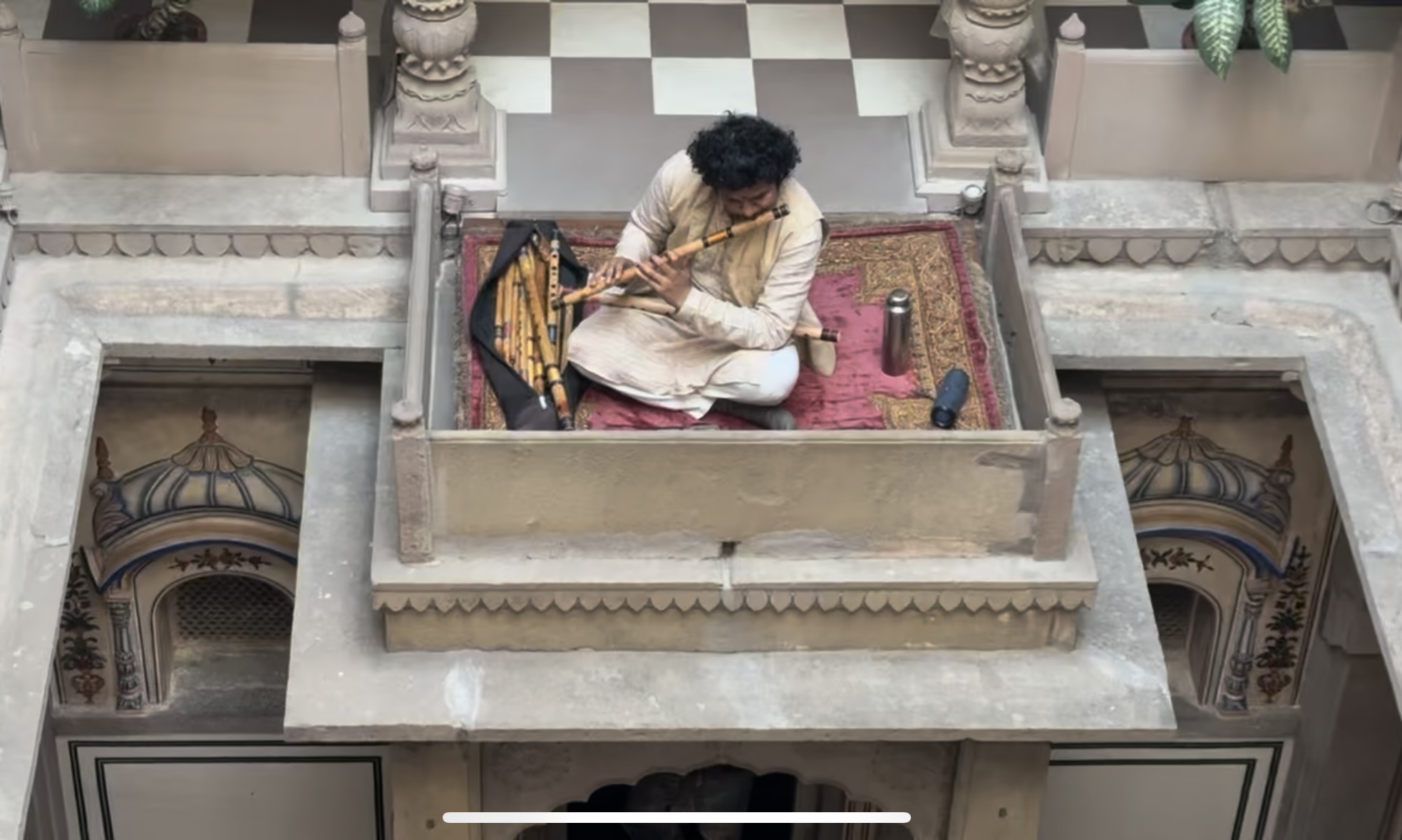
BrijRama Palace is located on the Darbhanga Ghat and is the 2nd oldest palace in the city, built in 1812. It has been expanded and renovated over the years, serving as an intellectual and cultural center in the late 1900s and opening as a 5-star hotel in 2016, but it remains one of the oldest and most well-known structures on the ghats.
After landing at Varanasi Airport, we were picked up by a hotel shuttle and driven ~1 hour to a landing point that seemed to be smack dab in the middle of the chaotic streets of Varanasi. We followed our driver, on foot, through the windy, crowded, narrow alleys, and eventually made our way to the shores of the Ganges where we boarded a boat that took us the rest of the way to BrijRama.
It was quite the journey to arrive, but when we did, we instantly knew we had landed somewhere special. The palace looks like something out of an old storybook, and although renovated, its interior provokes nostalgia.
Although we spent much of our time outside exploring the wonders of Varanasi, BrijRama was our safe haven and calm amidst the chaos. The staff was wonderful and helped us book all of our activities. The all-vegetarian cuisine was tasty, and quintessential Indian delights like henna and Kathak dance performances topped off our experience.
We had a magnificent time.
Dashashwamedh Ghat (evening aarti)
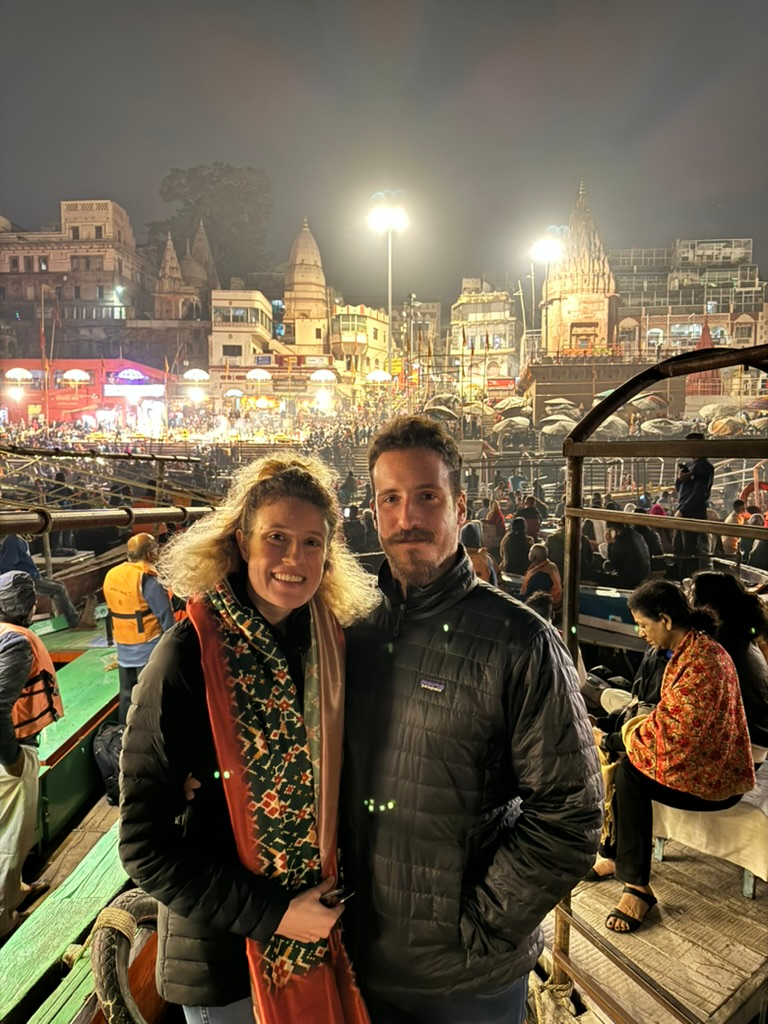
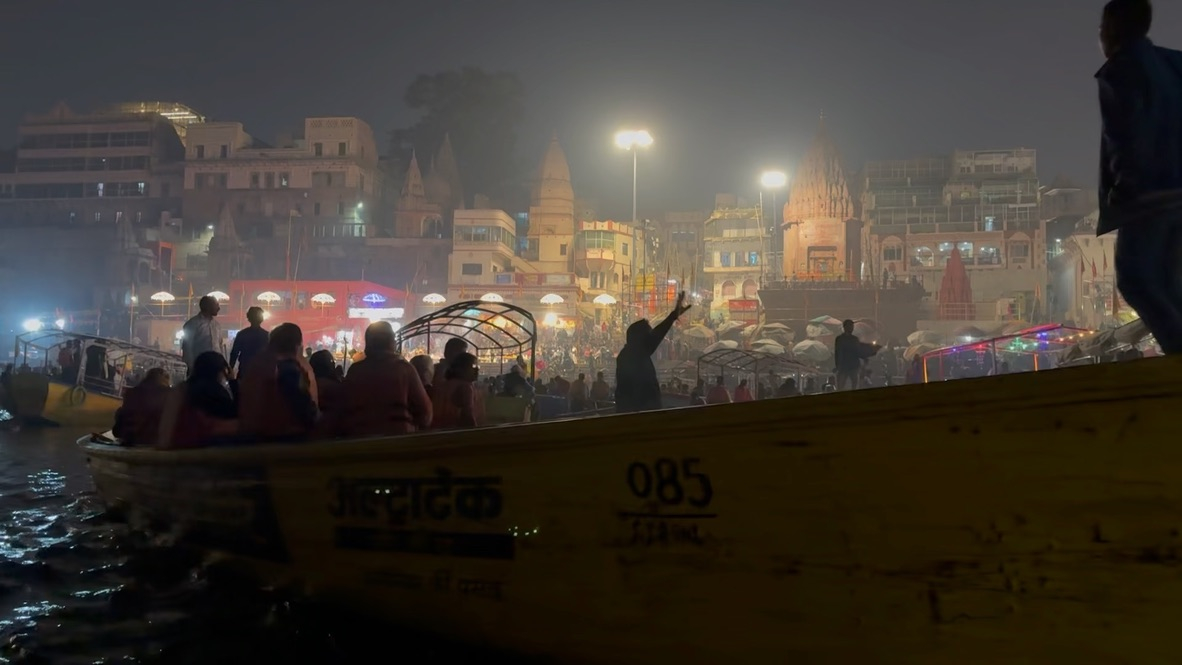
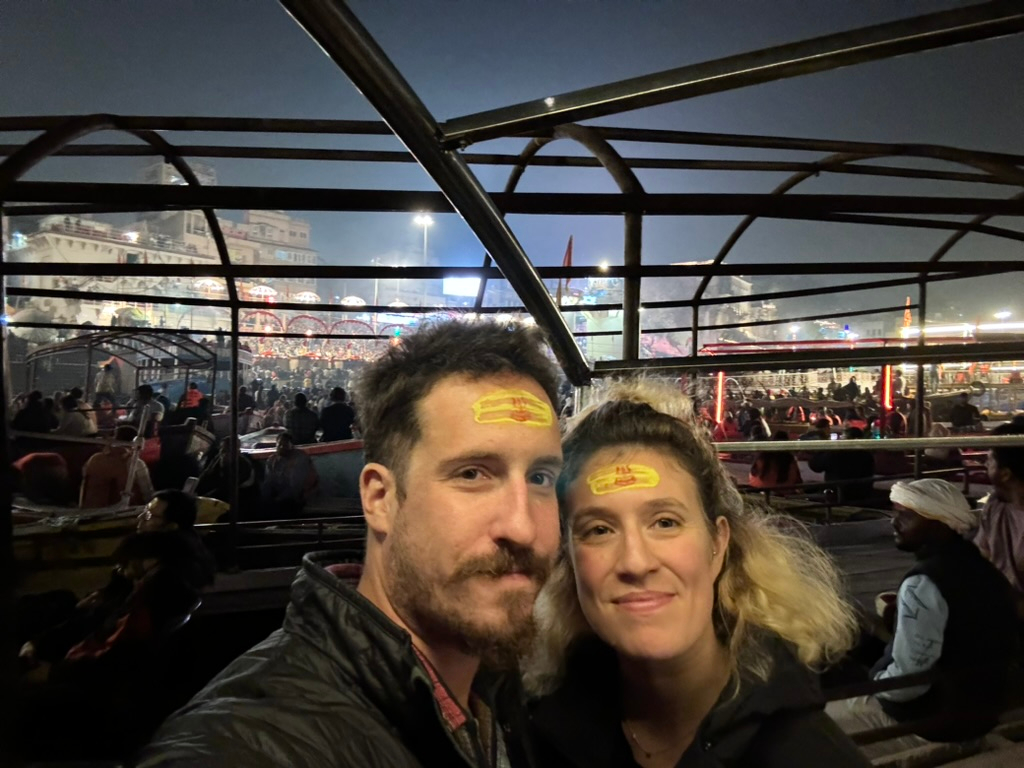
Every night, without fail, there is an evening aarti (prayer session) at The Dashashwamedh Ghat during which 100s of boats and 1,000s of people gather as close as humanly possible to see 7 priests perform a synchronized ritual atop small wooden platforms by the river.
It’s impossible not to feel the spiritual buzz in the air, but from my perspective, the real thrill is watching boats of every shape and size squeeze their way into position. Everyone is so close that vendors can hop between boats trying to make money off of tourists.
It was truly one of the most beautifully chaotic experiences I’ve had.
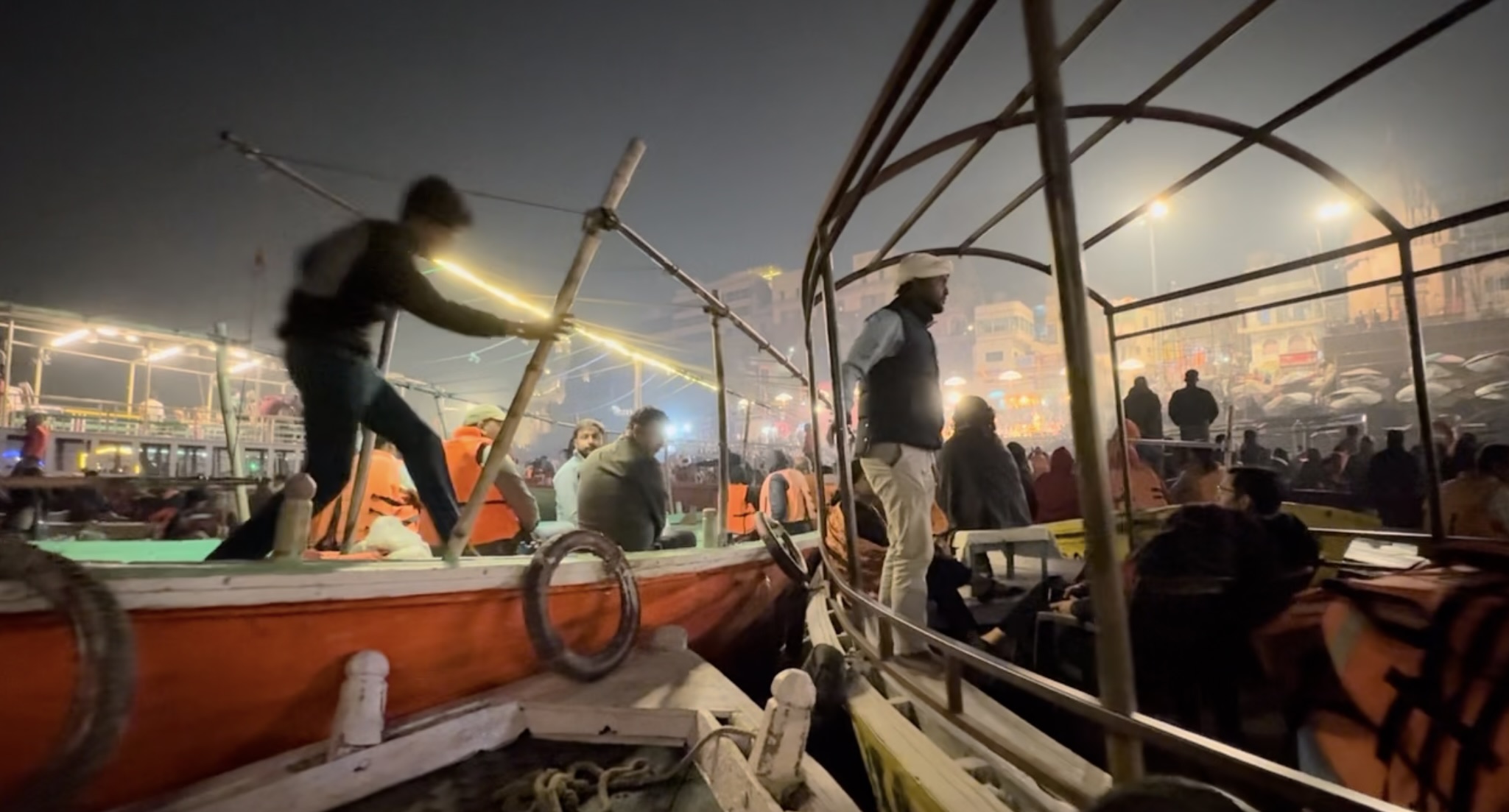
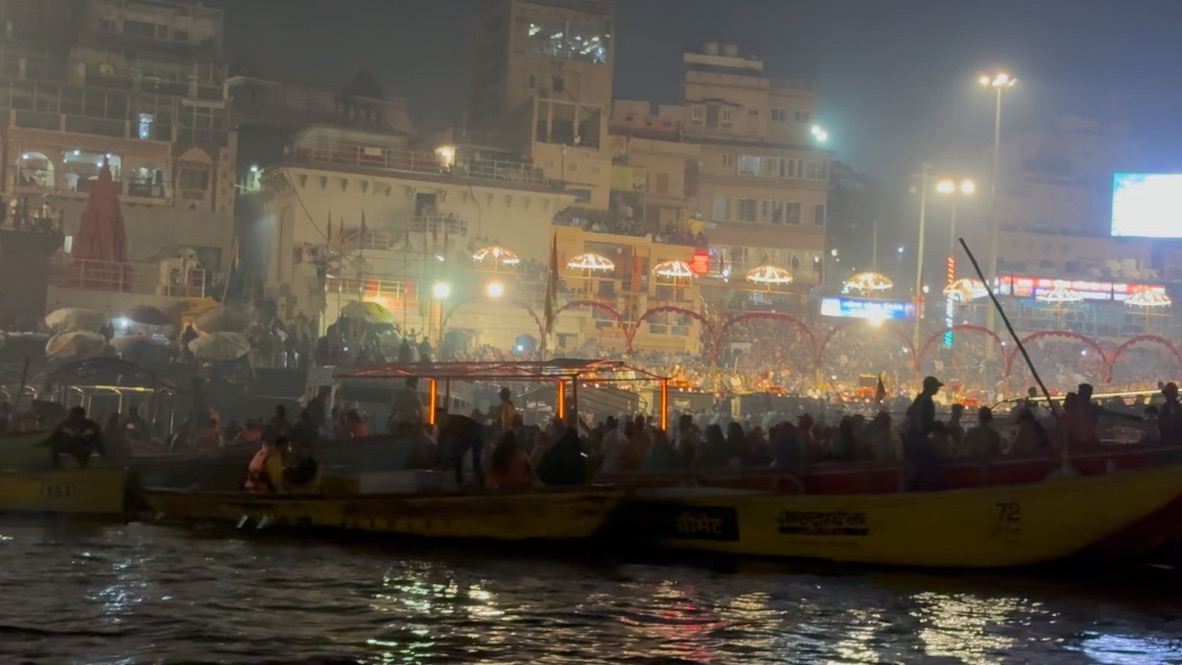
Assi Ghat (morning aarti)
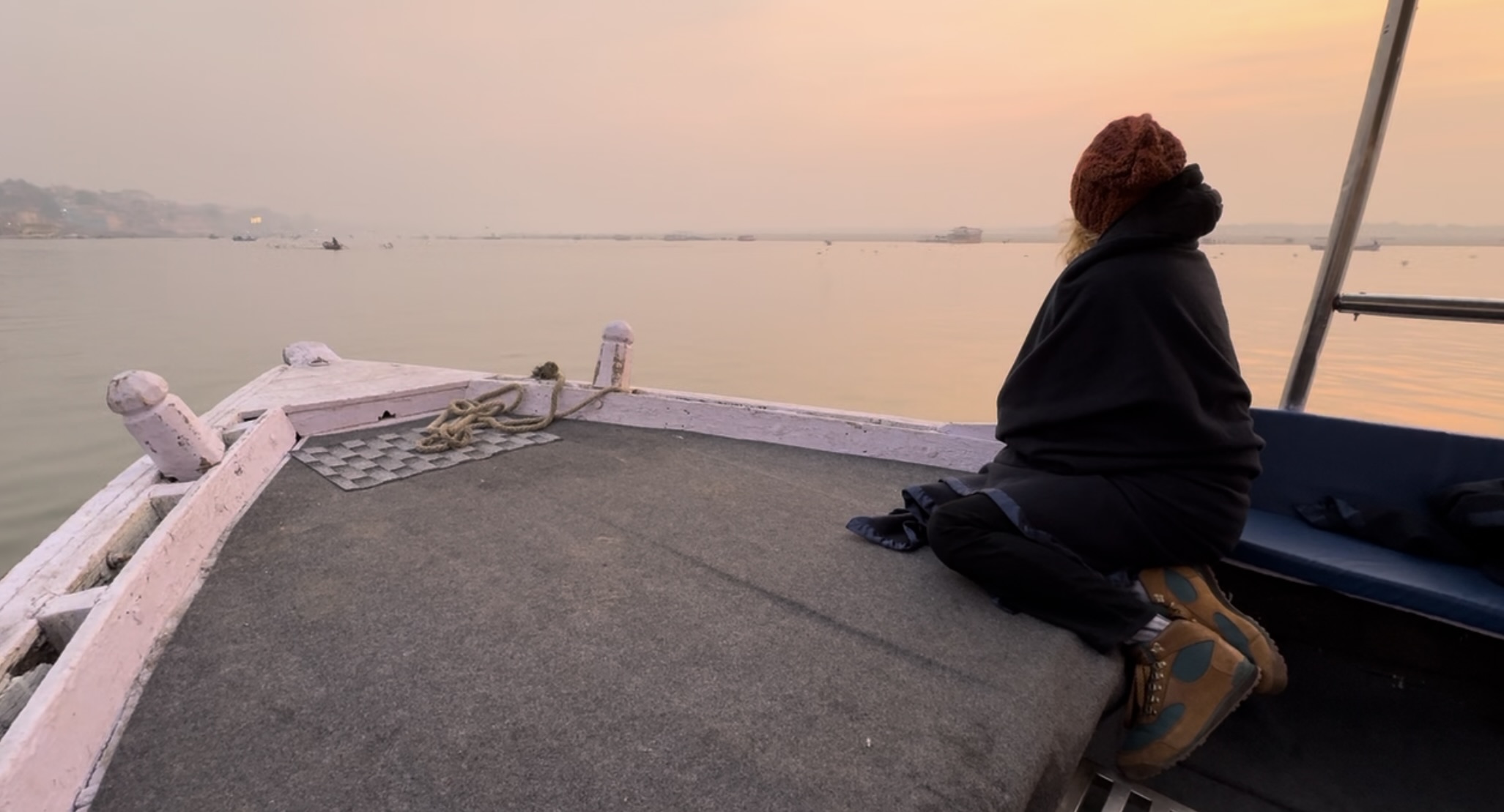
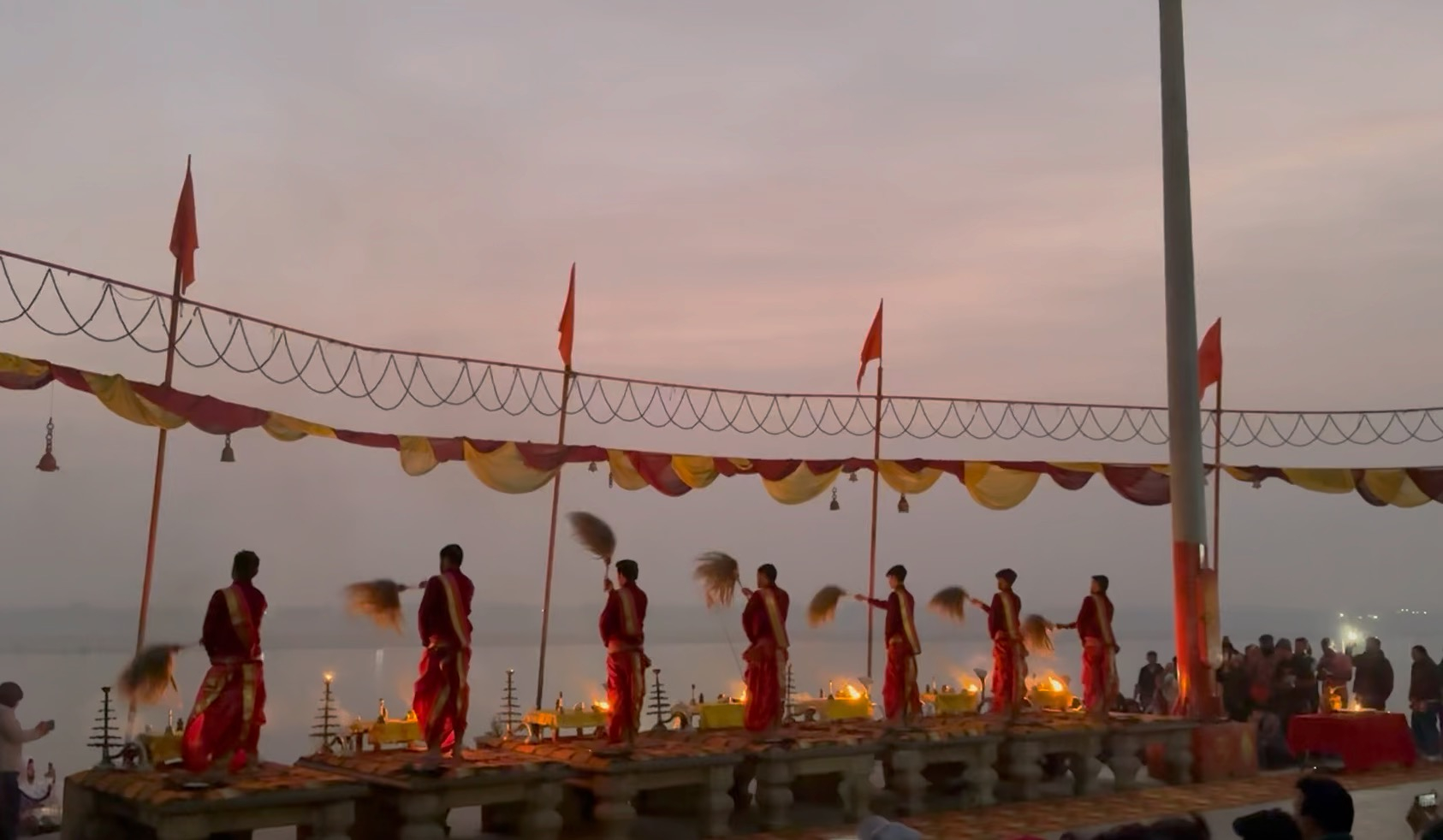
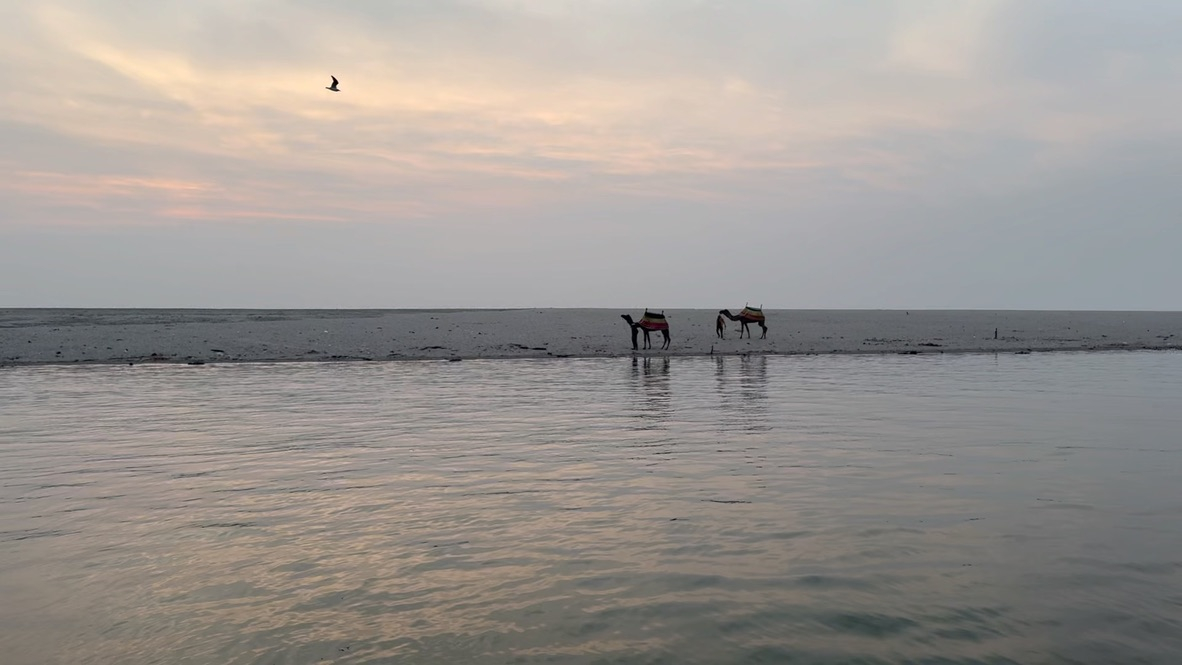
We woke up at the crack of dawn, hopped on a boat (as we started realizing is a common way to move around the city), and headed to the daily morning prayer session that starts at 5:30am. It was not as chaotic as the evening prayer session, which made it feel more deeply spiritual and haunting.
The morning prayer is an offering to both the Sun God and the sacred Ganges. Even if you aren’t religious, it’s hard not to feel like there’s something otherworldly at play. I can still recall the rhythmic chanting in my head even 9 months later.
I will never forget our boat ride back to BrijRama. We saw the sun slowly rise and light up the hazy air. We saw the Ganges and the city of Varanasi wake up and transform into a city bustling with spiritual fervor. Flocks of migratory birds soared peacefully through the air, sometimes directly next to the boats, adding to the serenity of an early morning Ganges’ boat ride.
Manikarnika Ghat (a public crematorium)
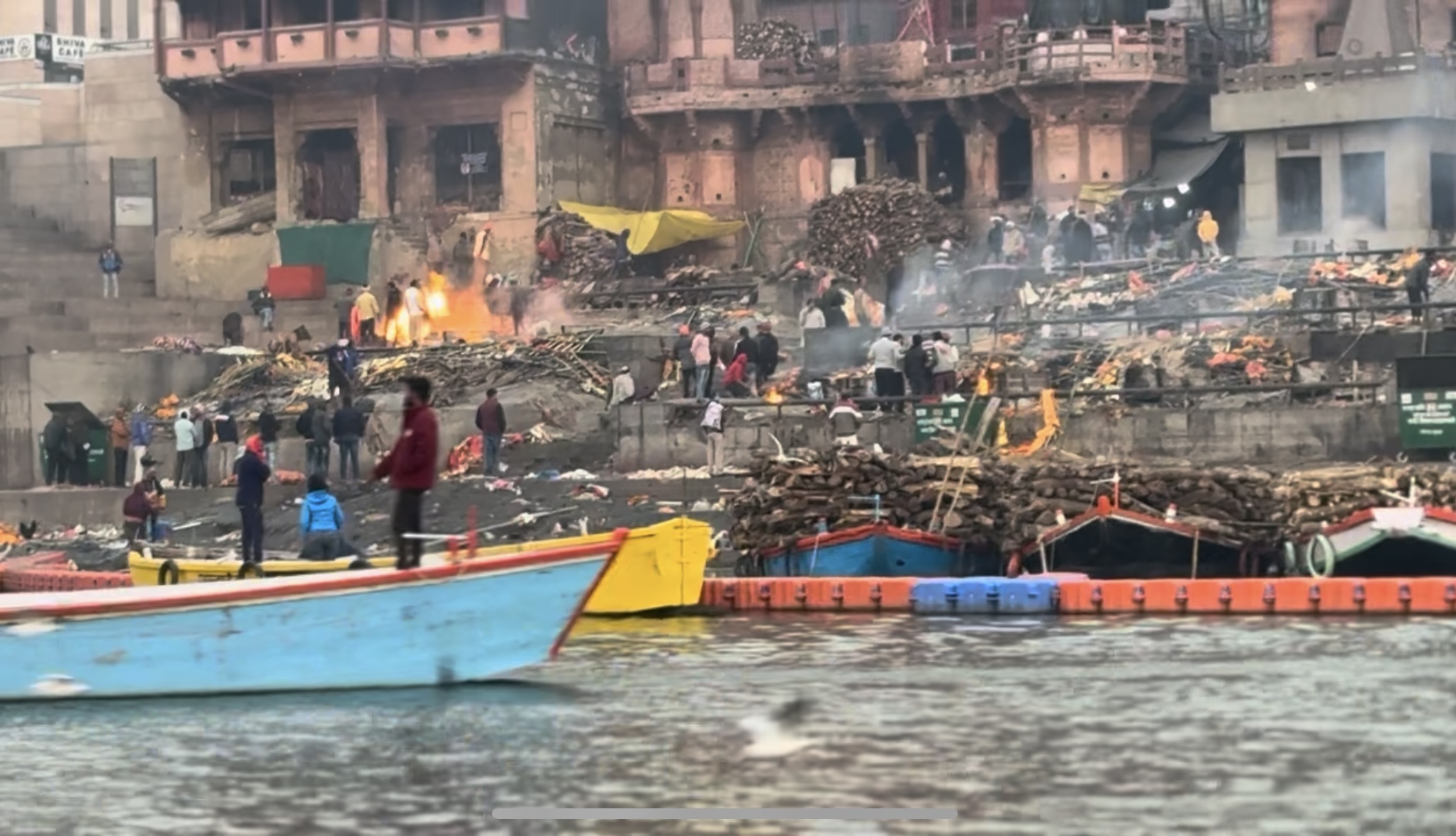
The Manikarnika Ghat houses a 24/7 outdoor crematorium which has been running for 3,000 years, and supposedly, the fire used to burn the bodies has never gone out. Families travel from all over India to cremate their deceased loved ones here, and the sick often travel to this holy city in their final days as it is believed that dying in Varanasi breaks the cycle of reincarnation.
We expected to feel sorrow as we watched families dip their loved ones’ bodies into the Ganges for a final cleansing and then burn them in the open air, but it felt surprisingly normal and even celebratory. The openness with which people in Varanasi talk about death and accept display is refreshing, especially coming from a society where this inevitable step for us all is often treated as taboo.
Walk the streets of Varanasi
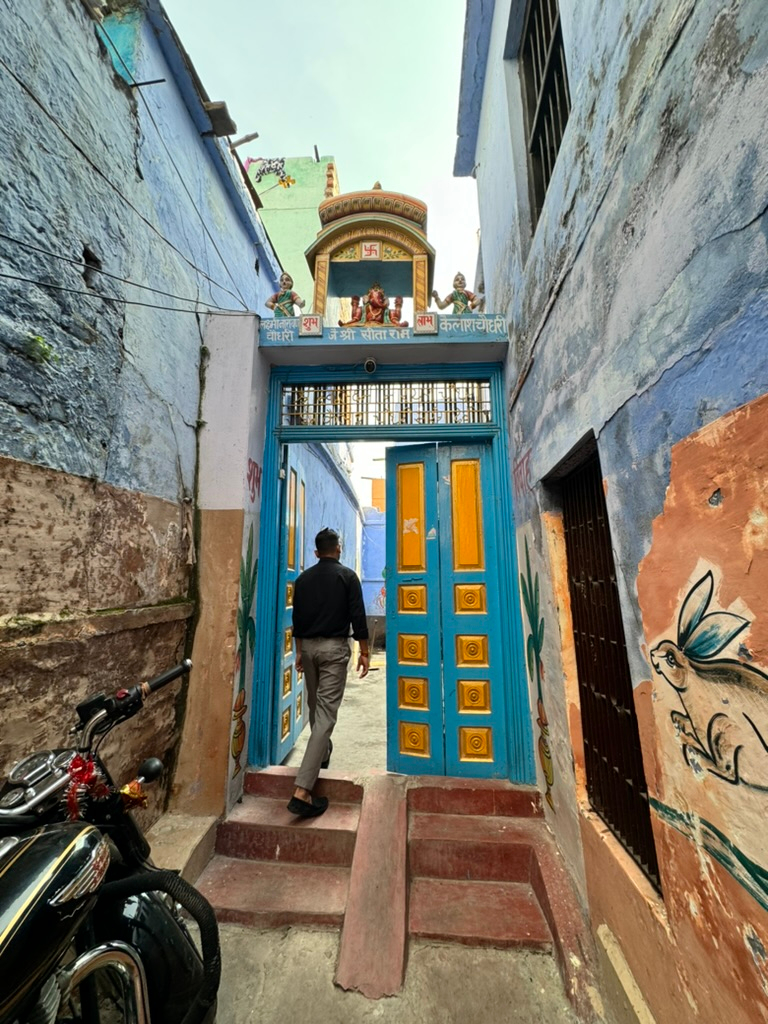
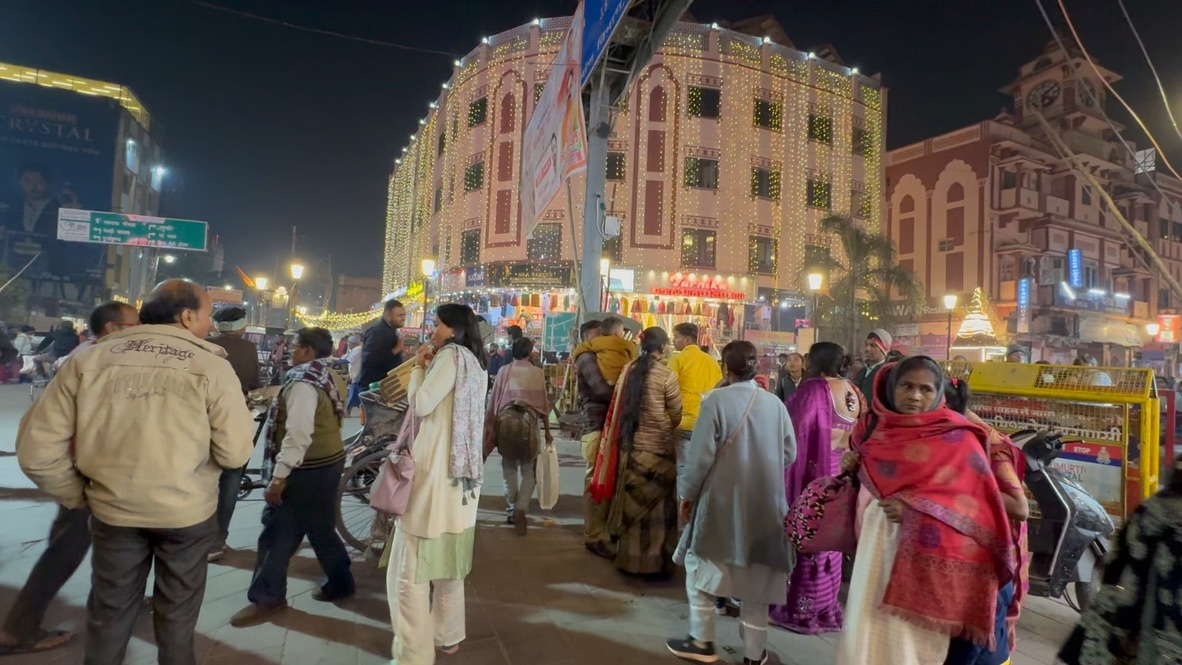
Take the Heritage Walk with Rakesh (who is part of our global community!) to explore Varanasi’s “historic ghats, sacred Ganges, and labyrinthine streets.” It felt empowering to have Rakesh by our side because he is a product of Varanasi – born and raised there, he not only knows all the secret spots but also understands the history and cultural significance of everything.
Once you’ve experienced navigating the disorienting streets of Varanasi with a local by your side, try it out yourself! We decided to embark on a nighttime walk and have dinner at Shree Cafe, a cozy spot serving traditional Indian food. This is an adventure but so worth it. If you’re not from Varanasi, or India, it will seem quite overwhelming – motorbikes, people walking in all directions, the narrowest streets, cows, sounds, smells, people shouting at you, etc. However, there is a fluidity and complicated structure to it that only the locals understand. Try your best. Smile. Be respectful. You will have a glorious time.
Varanasi is most unlike anywhere we’ve been. It was comforting to be in a place that sees life and death as part of the same connected journey and collectively operates on a belief in something bigger than ourselves.
Need help designing your own trip? Contact us.